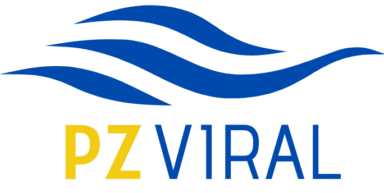Why Financial Organization Matters
Managing your finances doesn’t have to be stressful or overwhelming. With proper organization, you can take control of your money, reduce financial anxiety, and build a secure financial future. Financial organization is the foundation of financial health and well-being, helping you make informed decisions about spending, saving, and investing.
When your finances are organized, you can easily track your progress toward goals, identify potential problems before they become serious, and make adjustments as needed. This systematic approach transforms financial management from a source of stress into a tool for achieving your dreams.
Step 1: List All Your Financial Accounts
Start by creating a comprehensive inventory of all your financial accounts. You can use a spreadsheet, financial app, or simple paper filing system – whatever works best for you. The key is to separate your accounts into clear categories for easy reference.
Assets (what you own):
- Checking accounts
- Savings accounts
- 401(k), 403(b), or other employer-sponsored retirement plans
- Individual retirement accounts (IRAs and Roth IRAs)
- Investment accounts (brokerage, mutual funds, etc.)
- Life insurance with cash value
Liabilities (what you owe):
- Mortgage
- Credit cards
- Personal loans
- Car loans
- Student loans
- Other debts
Include account numbers, balances, interest rates, and contact information for each account. This master list becomes your financial command center, allowing you to see your complete financial picture at a glance.
Step 2: Create a Realistic Budget
A budget is your roadmap to financial success. Start by calculating your total monthly income from all sources, including salary, rental income, investment dividends, and any side hustle earnings.
Next, list all your monthly expenses in categories such as housing, utilities, food, transportation, insurance, debt payments, and discretionary spending. Be honest about your actual spending – underestimating expenses will sabotage your budget.
Compare your income to your expenses. If you have money left over, allocate it to savings and financial goals. If your expenses exceed your income, you need to either increase income or reduce spending to avoid accumulating debt.
Remember that a budget isn’t restrictive – it’s liberating. It gives you permission to spend on things you value while ensuring you’re building toward your financial goals.
Step 3: Track Your Spending Habits
Monitoring your spending helps you stay on budget and identify areas where you can improve. Even if your income covers all expenses, tracking reveals opportunities to optimize your money.
Simple tracking strategies:
- Review bank and credit card statements monthly
- Use budgeting apps to categorize expenses automatically
- Keep receipts and compare them to your statements
- Try the cash envelope method for discretionary spending
- Cancel unused subscriptions and memberships
Many people are surprised to discover how much they spend on small, frequent purchases. That daily coffee or monthly subscription you forgot about can add up to significant amounts over time.
Step 4: Develop a Debt Management Strategy
Debt can derail your financial progress, so developing a clear repayment strategy is crucial. Start by listing all debts with balances, minimum payments, and interest rates.
Popular debt repayment methods:
Debt Avalanche Method: Pay minimums on all debts but put extra money toward the highest interest rate debt first. This approach saves the most money in interest charges over time.
Debt Snowball Method: Pay minimums on all debts but focus extra payments on the smallest balance first. This method provides psychological wins that can keep you motivated.
Debt Consolidation: Consider combining multiple debts into a single loan with a lower interest rate, simplifying payments and potentially reducing total interest paid.
Choose the method that best fits your personality and financial situation. The most important thing is to stick with your chosen strategy consistently.
Step 5: Set Clear Financial Goals
Financial goals give your money management purpose and direction. Without clear goals, it’s easy to spend money on immediate wants rather than building long-term wealth.
Goal-setting framework:
- Short-term goals (1 year or less): Emergency fund, vacation, small purchases
- Medium-term goals (1-5 years): Home down payment, car purchase, debt payoff
- Long-term goals (5+ years): Retirement, children’s education, financial independence
For each goal, determine the total amount needed, your timeline, and how much you need to save monthly. Be specific and realistic – vague goals like “save more money” are less effective than “save $1,000 for an emergency fund in 6 months.”
Write down your goals and review them regularly. This keeps them top of mind and helps you make spending decisions that align with your priorities.
Step 6: Automate Your Savings
Automation removes the temptation to spend money you should be saving. When saving happens automatically, you’re more likely to reach your financial goals without feeling deprived.
Automation strategies:
- Set up automatic transfers from checking to savings accounts
- Use employer payroll deductions for retirement contributions
- Schedule automatic bill payments to avoid late fees
- Set up automatic investment contributions to brokerage accounts
Take advantage of employer 401(k) matching – it’s free money that can significantly boost your retirement savings. If your employer matches contributions up to 6% of your salary, contribute at least that much to capture the full match.
Some lenders offer interest rate discounts for automatic payments. For example, federal student loans typically offer a 0.25% interest rate reduction for autopay enrollment.
Step 7: Review and Adjust Regularly
Your financial situation and goals will change over time, so regular reviews ensure your system stays effective. Different review frequencies serve different purposes:
Weekly reviews: Check spending against budget, review upcoming bills, and make short-term adjustments.
Monthly reviews: Analyze spending patterns, update account balances, and assess progress toward monthly goals.
Quarterly reviews: Evaluate investment performance, adjust savings rates, and review insurance needs.
Annual reviews: Comprehensive assessment of all financial goals, tax planning, and major strategy adjustments.
During reviews, look for unauthorized charges, billing errors, and opportunities to optimize your financial strategy. Also check your credit report annually for errors that could affect your credit score.
Step 8: Know When to Seek Professional Help
While many people can successfully manage their finances independently, there are times when professional guidance is valuable. Consider consulting a financial advisor if you’re facing complex decisions, major life changes, or if you’re consistently struggling to meet your financial goals.
When to consider professional help:
- Planning for retirement or major life transitions
- Managing a large inheritance or windfall
- Dealing with complex tax situations
- Recovering from financial setbacks
- Investing significant amounts of money
- Feeling overwhelmed by financial decisions
A qualified financial advisor can provide objective advice, help you avoid costly mistakes, and ensure you’re on track to meet your long-term goals. Look for fee-only advisors who act as fiduciaries, meaning they’re legally required to act in your best interests.
Building Long-Term Financial Success
Organizing your finances is just the beginning of your financial journey. The real benefits come from consistently following your system and making adjustments as your life evolves. Start with these eight steps, but remember that financial organization is an ongoing process, not a one-time event.
The key to success is starting where you are and taking action. You don’t need to perfect everything at once – even small improvements in financial organization can have significant long-term benefits. Focus on building sustainable habits that you can maintain over time.
With organized finances, you’ll have the foundation to build wealth, reduce stress, and achieve your financial dreams. The effort you invest in organizing your finances today will pay dividends for years to come.
Frequently Asked Questions
Q: How often should I review my finances? A: Review your budget weekly, analyze spending monthly, and conduct comprehensive reviews quarterly. Annual reviews should include all investments, insurance, and major financial goals.
Q: What’s the best way to track expenses? A: Use whatever method you’ll actually follow consistently – whether that’s a budgeting app, spreadsheet, or pen and paper. Many people find smartphone apps most convenient for real-time tracking.
Q: Should I pay off debt or save first? A: Build a small emergency fund ($500-$1,000) first, then focus on high-interest debt. Once debt is manageable, balance debt repayment with saving for other goals.
Q: How much should I save for emergencies? A: Aim for 3-6 months of essential expenses in an easily accessible savings account. Start with $1,000 if that seems overwhelming, then gradually build to the full amount.
Q: When do I need a financial advisor? A: Consider professional help for complex situations like retirement planning, significant investments, tax optimization, or when you feel overwhelmed by financial decisions.
Q: What if I can’t stick to my budget? A: Review your budget for unrealistic expectations, track where you’re overspending, and make adjustments. It’s better to have a budget you can follow than a perfect budget you ignore.














